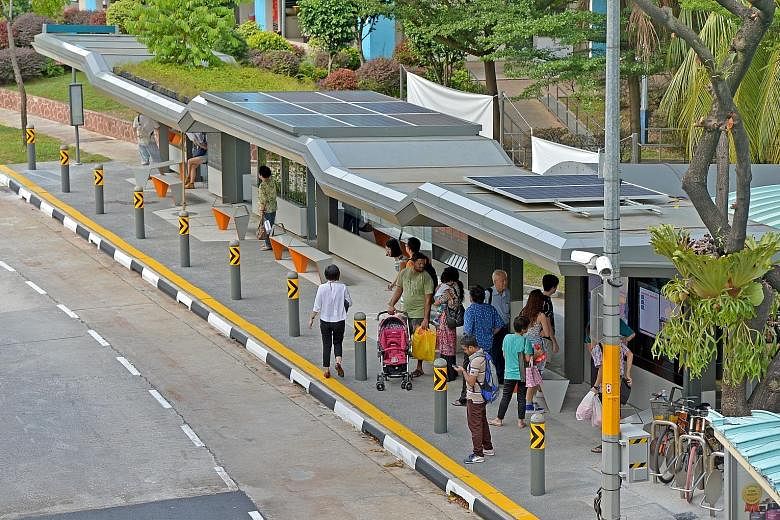They are about 1m tall and can be found at almost every bus stop in Singapore.
Most people do not notice them, or, if they do, they may think of them as the things their hips bump into when running for the bus.
But these mini pillar-like structures, called bollards, can save lives.
There was nobody waiting at the Braddell Road bus stop that a Mount Alvernia Hospital shuttle bus crashed into recently, injuring 13 people on board.
But if there were, the bollards at the bus stop would likely have lessened the impact of the crash on waiting commuters.
These safety structures were introduced in 1999, the Land Transport Authority (LTA) told The Straits Times, to lessen the severity of collisions for commuters waiting for buses.
-
Types of bollards
-
Safety bollards are generally designed to be "yielding", including those found at bus stops.
They help to shield commuters from vehicles but are also meant to move or break off as they absorb the impact, so as to also protect passengers inside vehicles, said the Land Transport Authority.
Among other types of safety bollards are the concrete and steel bollards on pavements.
However, security bollards are meant to be unyielding. They are made to stop vehicles weighing up to 7,500kg.
Security bollards can be found in secured places such as Changi Airport and Parliament House.
A year before, on May 13, 1998, three people were killed on the spot and another four seriously hurt after a sports car ploughed into a Bendemeer Road bus stop.
Today, there are about 18,000 bus stop safety bollards, with an average of four to five of them at each stop.
Designed to withstand the impact of vehicles travelling at posted speed limits, bollards prevent speeding vehicles from ploughing further into bus stops, and reduce the risk of direct impact on commuters at the bus stop, said LTA.
The bollards are usually painted the same colour as the bus stops they line - save for a strip of reflective stripes, said LTA.
Made of circular, hollow structural steel and concrete, they help absorb the direct impact of vehicles if an accident happens, said LTA.
These structures also increase the visibility of bus stops, especially at night.
Mr Chong Kee Sen, former president of The Institution of Engineers, Singapore, said that while bollards are meant to protect commuters at bus stops against oncoming vehicles, they must also be designed to be "yielding".
Referring to the Braddell Road crash, he said: "In this incident, there was no one at the bus stop. But if the bollards were made to have a solid wall impact, they would have caused worse injuries to those inside the bus when there was nobody to protect at the bus stop."
Bollards at bus stops here are all designed to be yielding.
Mr Chong noted that bollards are meant to withstand the impact of small vehicles like cars, and larger ones like buses.
"Impact is a combination of weight and speed. So, yes, bollards are expected to withstand the impact of buses, but remember that buses are also expected to be going slower than cars."
Mr A.P. Gopinath Menon, senior research fellow at Nanyang Technological University's School of Civil and Environmental Engineering, said bollards are the best way to protect commuters.
"They are spaced far enough apart that they don't obstruct commuters like those in wheelchairs, but not spaced so far apart that vehicles would pass through."

